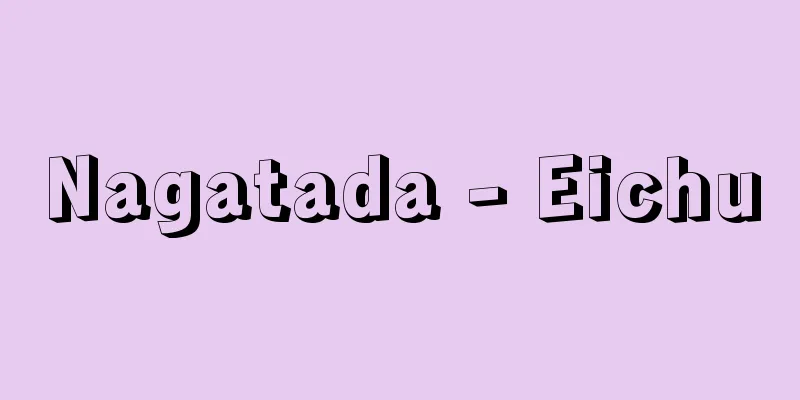Brass - Oudou (English spelling) brass

|
A copper alloy based on copper with zinc added. It is also called brass. Although it appeared later than bronze, it is the most common copper alloy along with bronze, and was originally a binary alloy of copper and zinc. Zinc is dissolved in copper at about 38% (by weight), so α (alpha) phase alloys up to this point have excellent ductility, and as the amount of zinc increases, the strength increases and the color of the alloy changes from copper red to yellowish. For this reason, 30% zinc has been used as a strong copper alloy with good formability since ancient times, called Shichisan brass, and those with less zinc have been used as inexpensive gold alloys. When the solubility limit is exceeded, a hard body-centered cubic solid solution called β (beta) is mixed in, and at 40% zinc it becomes β1 phase, so a 40% zinc alloy, which is a hard and strong alloy with β mixed in, and has moderate formability because it is mainly α, was used as Shiroku brass where hardness and wear resistance were required. In addition to the 73 and 46 alloys, in recent years, a 65/35 alloy has been produced in which zinc has been added to the maximum solid solubility limit of alpha in elastic materials, etc., and this is called a "65/35 coral alloy." Alloys with 38% zinc or less do not undergo phase change, so heat treatments such as quenching and tempering are not effective, but zinc is tetravalent and has considerably more valence electrons than copper, and alloys with a wide α phase have a large work hardening, so they can be strengthened by cold working. Furthermore, brass usually hardens slightly during low-temperature annealing, where only the recovery of processing strain occurs. This hardening saturates at a certain value and does not soften, and this hardening improves elastic properties and eliminates stress corrosion, a drawback of brass. Brass in practical use includes those with 20% or less zinc used for gold buttons, Buddhist altar fittings, and as a substitute for gold leaf, the aforementioned 73, which is used for strong processing such as deep drawing, the elastic 65/35, and the strong 46. Brass with 8 to 20% zinc is called tonback, that with 3 to 22% is called red brass, and 46 brass is called Muntz metal. Special brasses are made by adding other elements in addition to zinc, and there are various practical alloys such as naval brass and Admiralty brass, which are made by adding tin, manganese bronze, which is made by adding manganese, Silzin bronze, which is made by adding silicon, Alblack, which is made by adding aluminum, and hard brass, which is made by adding lead to give it free-cutting properties. Brass that is not annealed at low temperatures will suffer from stress corrosion if there is residual tensile stress from machining or casting. Also, dezincification occurs during heat treatment, when zinc, which has a high vapor pressure, escapes from the surface of the material, so measures to prevent this are necessary. [Ryōtsugu Mishima] Source: Shogakukan Encyclopedia Nipponica About Encyclopedia Nipponica Information | Legend |
|
亜鉛を銅に加えたものを基台とする銅合金。真鍮(しんちゅう)ともいう。青銅よりは出現が後れたが、これと並んでもっとも多い銅合金で、本来は銅‐亜鉛の二元合金。銅の中に亜鉛は約38%(重量%)固溶するので、ここまでのα(アルファ)相合金は優れた展延性があり、亜鉛量が増すとともに強さを増し、合金の色は銅の赤から黄色みを増していく。このため古くから成形加工性のよい強力銅合金として30%亜鉛のものが七三(しちさん)黄銅として利用され、また、これより亜鉛の少ないものは安価な金色合金として用いられた。固溶限を超えると硬いβ(ベータ)とよばれる体心立方晶の固溶体が混じってきて、亜鉛四十数%でβ1相になるので、βの混じった硬くて強い合金で、なおαが主体のために適度の加工性のある40%亜鉛の合金が四六(しろく)黄銅として、硬さや耐摩耗性の必要なところに使われた。この七三、四六に加えて近年は、弾性材料などに、αの固溶限いっぱいに亜鉛を加えた65/35のものが「ろくご・さんご合金」とよばれてつくられている。 38%亜鉛以下の合金には相変化はないから、焼入れ、焼戻しのような熱処理はきかないが、亜鉛は4価で銅より価電子が相当多く、広いα相の合金は加工硬化が大きいので、冷間加工で強さを得ている。さらに黄銅は、普通には加工ひずみの回復がおこるだけの低温焼なまし中に若干硬化する。この硬化はある値で飽和して軟化には転じないし、この硬化により弾性的性質は向上し、黄銅の欠点である応力腐食がおこらなくなる。 実用される黄銅には、金ボタン、仏具、金箔(きんぱく)代用に用いられる20%以下の亜鉛のもの、深絞りなどの強加工をして利用する前記七三、弾性材の65/35、強力材の四六の各種がある。8~20%亜鉛をトンバック、3~22%のものを丹銅、四六黄銅をムンツメタルという。 亜鉛のほかに別元素を加えたものが特殊黄銅で、スズを加えたネーバル黄銅、アドミラルティ黄銅、マンガンを加えたマンガン青銅、ケイ素を加えたシルジン青銅、アルミニウムを加えたアルブラック、鉛を加えて快削性をもたせたハードブラスなど種々の実用合金がある。 低温焼なましをしない黄銅は、加工や鋳造の残留引張り応力があると応力腐食をおこす。また熱処理中に蒸気圧の大きい亜鉛が部材表皮から抜ける脱亜鉛がおこるので防止策が必要である。 [三島良續] 出典 小学館 日本大百科全書(ニッポニカ)日本大百科全書(ニッポニカ)について 情報 | 凡例 |
Recommend
White metal
Although it is often mistaken for a white alloy du...
Wild geese - I want to be wild
...As a result of applying makeup in this way, va...
Osteospermum ecklonis (English spelling) Osteospermum ecklonis
… [Eiichi Asayama]. … *Some of the terminology th...
Naval Strategy
...His overseas expansion theory, leveraging the ...
Ovary - shibou
This refers to the slightly swollen part at the b...
Temple name - Ingo
It is the highest honorific given above a Buddhis...
Chronicles of Japan
The title of a song from the Kōwaka dance series. ...
Segmentation
…As such, the division of single sounds is not al...
Daśaharā (English spelling)
A Hindu festival. It is held for 10 days leading u...
Omotego [village] - Omotego
A village in Nishishirakawa District, southeastern...
Iconoclasm - Iconoclasm
〘noun〙① A Christian enlightenment movement that so...
Euproctis subflava (poisonous moth)
An insect of the Lepidoptera order, family Lymantr...
Abdominal pain - Abdominal pain
Pain originating from the abdomen is a very commo...
Chicago - Shikago (English spelling) Chicago
It is a commercial and industrial city on the sho...
Perov (English spelling) Vasiliy Grigor'evich Perov
Russian painter. Born in Tobolsk, but some say he...









